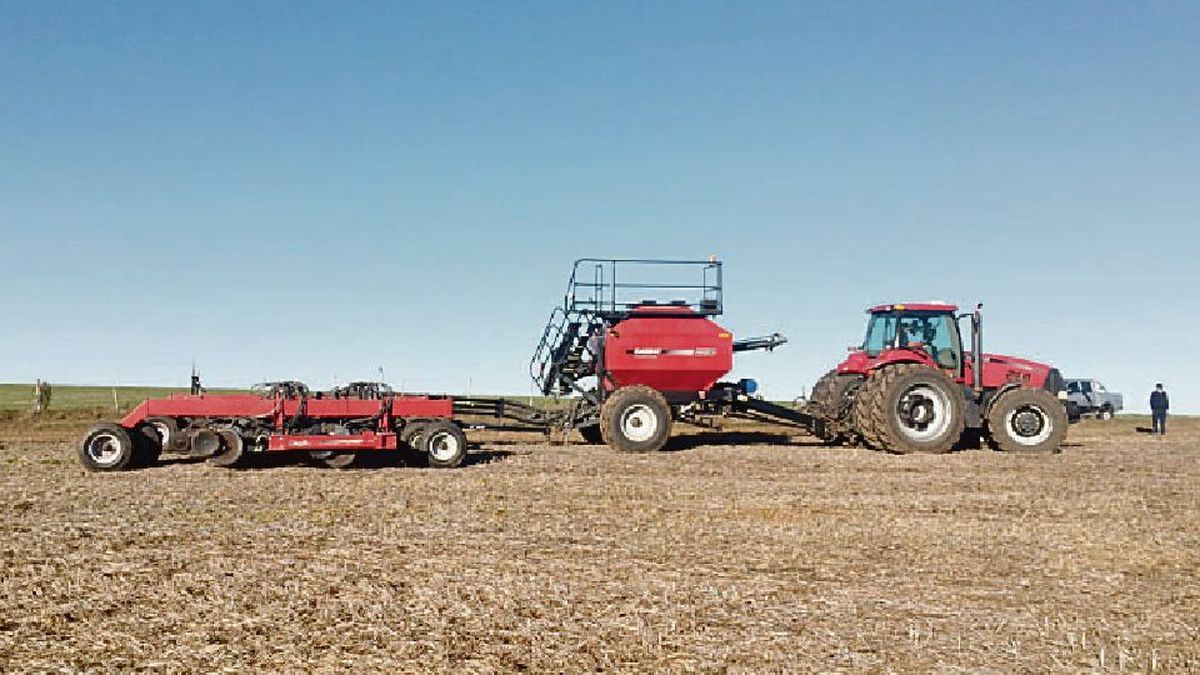In some areas there is a lack of moisture in the soil, but in others there is plenty. So far, only 19% of the area estimated at 6.3 million hectares for the 2023/2024 campaign has been implanted.
He wheat is a key crop for the Argentine economy since the dollars of your crop they begin to enter from December and are the indispensable bridge until the threshing of soybeans, even more so in a context like the current one in which there is a maximum need for fresh currency income. Now the truth is that the current campaign of the cereal presents more uncertainties than certainties, since planting progresses at a slow pace and shows the greatest delay in the last five years while prices show clear signs of regression at the international level.
The content you want to access is exclusive to subscribers.
According to Buenos Aires Grain ExchangeUntil now Only 19% of the projected area with wheat was planted, which is around 6.3 million hectares. Meanwhile, in the core zone the progress is only 18% and that means that the current cycle is the one that shows the most delay in the last five years. The experts detail that there is no common denominator but that in some areas there is excess water in the soil and in others there is a lack of moisture. The thing is the drought left a mixed picture in the fertile lands of Argentina and that is being felt in the implantation of the cereal.


A key issue that producers take into account is that for the next 15 days in the core area, the entry of a polar wave is predicted, which will bring temperatures below normal while no significant rainfall is expected. Another situation that puts pressure on the campaign is international cereal prices that continue to fallsomething that was predicted by the market but that ends up eroding the scarce margins of farmers.
Meanwhile, a particularity is taking place in the local prices of wheat with immediate delivery, that is, the grain of the past campaign. The values are above what the international market shows. As explained by the Rosario Stock Exchangethe price of available wheat has risen by US$40 in the local market since the end of April, basically because the remainder of the 2022/23 crop to be marketed is meager.
“The milling industry could demand a number close to the 6.1 million tonsof which he has insured in the domestic market some 3 million tons. In other words, the milling industry has to go out and buy more than 3 million tons of wheat from here until the new harvest comes in. The million dollar question, and what is catapulting the prices of the available one, is if that wheat remains to be sold in a year in which the production fell by 50%”.
While the entity explains that the grain could be provided by the export sector that it already has it in its possession, but would charge a price above the international one taking into account the pressure of the internal market. “According to our projections, exports could be between 4 and 4.5 million tons throughout the campaign, so the sector would have more than 1.5 additional Mt to dump into the domestic market.”
Fertilization in sight
Beyond the difference in prices between the grain of the past cycle and the current one, the 2023 wheat sowing also brings another unknown, not a minor one: technology. After the overwhelming last year’s droughtadded to the local economic ups and downs, farmers they debate between fertilizing or not fertilizing strongly because their margins to apply technology are limited and that will end up harming the Final balance of the campaign.
So it is that with more shadows than lights the sowing of this strategic crop for the economywhich seeks to resurface but finds various drawbacks to overcome in the short and medium term.
Source: Ambito




